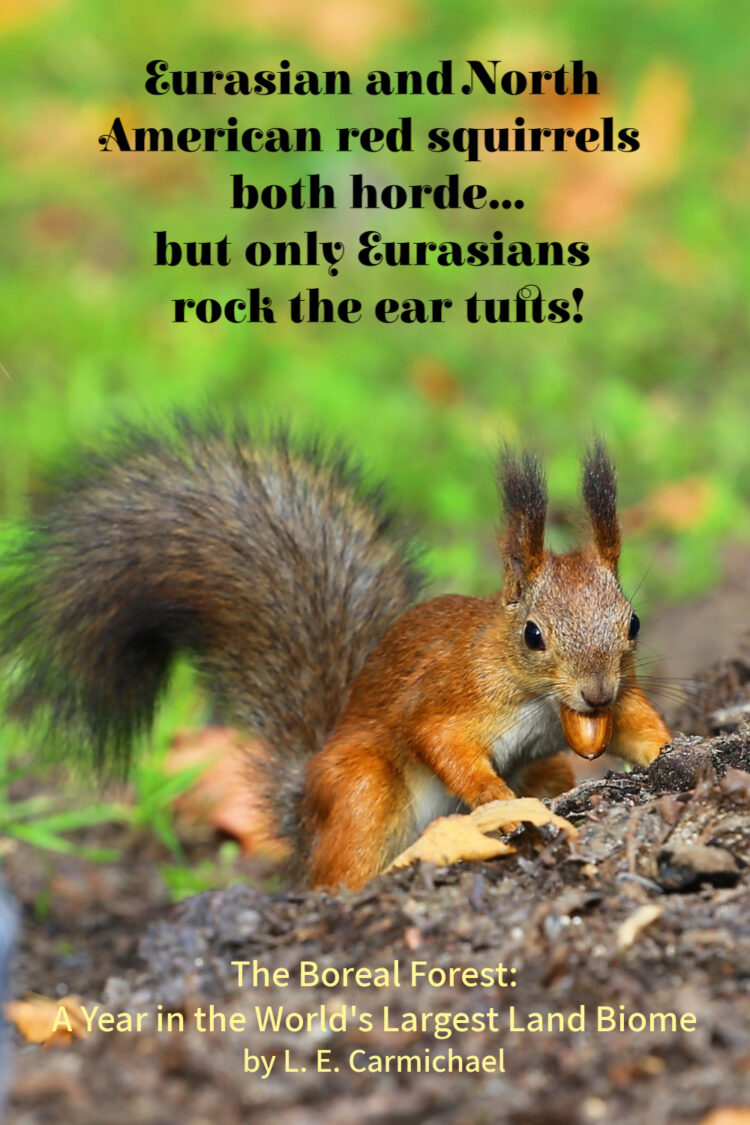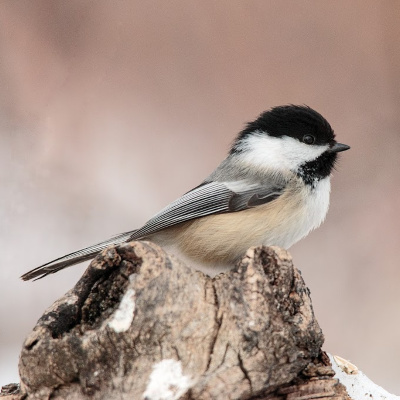 Announcements!
Announcements!
Have you entered the Rafflecopter giveaway for your chance to win the boreal forest prize pack? If not, scroll down to do so, and for a peak at the prizes.
Got a copy of The Boreal Forest and wish you could have it autographed? Well, you can, in a totally contact-and-COVID-free way. Drop me a note and I will mail you a free autographed bookplate for every copy of the book you purchase before June 12.
On to today’s foresty goodness!
Deleted Scene – Stocking Up for Winter
Pages 34-35 of The Boreal Forest show boreal birds migrating south for the winter. That scene originally included this snippet, showing a different winter survival strategy:
Red squirrels fill their winter pantries. One hauls a mushroom up a pine, wedging it between branch and trunk. Dangling from a nearby twig, a Siberian chickadee eyes the find. The squirrel chucks a warning—a sound like horse’s hooves.
 This scene was set in Russia, so these are Eurasian red squirrels (see below). Some scientists think they hide mushrooms in trees because this leads to air drying, which helps preserve the snack (mushroom jerky, anyone?). Second fun fact? Chickadees can actually dangle upside down! I would have loved to have seen that in the illustration…
This scene was set in Russia, so these are Eurasian red squirrels (see below). Some scientists think they hide mushrooms in trees because this leads to air drying, which helps preserve the snack (mushroom jerky, anyone?). Second fun fact? Chickadees can actually dangle upside down! I would have loved to have seen that in the illustration…
Extra bonus content: you can listen to the sounds Eurasian red squirrels make at this website (warning: you will likely spend hours perusing to their huge collection of animal recordings). I described the sound in the draft because, to my ears, it was totally different than the chattering sound Canadian red squirrels make!
Something else I found fascinating while researching this scene was that different animals hoard in different ways. The sidebar from the original draft:
Red squirrels and chickadees don’t migrate or hibernate. But food is scarce in winter, so they have to plan ahead. North American red squirrels store pinecones in mounds called larder hoards. One hoard contains up to 16,000 cones, enough food for 100 days.
Eurasian red squirrels hide cones and berries and mushrooms in many different locations. Chickadees also use this strategy, called scatter hoarding. It helps prevent theft, but requires very good memories.
Here’s an amazing fact about those chickadees – in one study, they stashed 170,000 separate food items from August to November, and an additional 30,000 from December to February. Data like that really make me wonder why “bird brain” is considered an insult!
Squirrels and chickadees are favourite backyard wildlife species – share your encounters with these critters in the comments! I love hearing from you.
 There’s still time to enter the giveaway!
There’s still time to enter the giveaway!
We often seen chickadees on our walks outdoors. Our neighbourhood on the west coast is blessed with a lot of bird life this time of year – chickadees, northern flickers, blue herons and eagles.
Excellent! Did you catch my earlier post on northern flickers and their crazy long tongues?